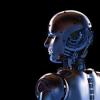
Breaking News
 GOOD BYE VENISON | Now, they're BANNING DEER FARMING and it's going to court in Minnesota.
GOOD BYE VENISON | Now, they're BANNING DEER FARMING and it's going to court in Minnesota.
 Millionaires in 1900, Billionaires Today and Trillionaires in the Future
Millionaires in 1900, Billionaires Today and Trillionaires in the Future
 Brighteon Broadcast News, Jan 9, 2026 - Mike Adams: We Are Building the Infrastructure...
Brighteon Broadcast News, Jan 9, 2026 - Mike Adams: We Are Building the Infrastructure...
 The breaking point: American farms are in crisis
The breaking point: American farms are in crisis
Top Tech News
 World's most powerful hypergravity machine is 1,900X stronger than Earth
World's most powerful hypergravity machine is 1,900X stronger than Earth
 New battery idea gets lots of power out of unusual sulfur chemistry
New battery idea gets lots of power out of unusual sulfur chemistry
 Anti-Aging Drug Regrows Knee Cartilage in Major Breakthrough That Could End Knee Replacements
Anti-Aging Drug Regrows Knee Cartilage in Major Breakthrough That Could End Knee Replacements
 Scientists say recent advances in Quantum Entanglement...
Scientists say recent advances in Quantum Entanglement...
 Solid-State Batteries Are In 'Trailblazer' Mode. What's Holding Them Up?
Solid-State Batteries Are In 'Trailblazer' Mode. What's Holding Them Up?
 US Farmers Began Using Chemical Fertilizer After WW2. Comfrey Is a Natural Super Fertilizer
US Farmers Began Using Chemical Fertilizer After WW2. Comfrey Is a Natural Super Fertilizer
 Kawasaki's four-legged robot-horse vehicle is going into production
Kawasaki's four-legged robot-horse vehicle is going into production
 The First Production All-Solid-State Battery Is Here, And It Promises 5-Minute Charging
The First Production All-Solid-State Battery Is Here, And It Promises 5-Minute Charging
 See inside the tech-topia cities billionaires are betting big on developing...
See inside the tech-topia cities billionaires are betting big on developing...
Physicists build "energy harvesting" circuit from graphene

Described in a paper published in the journal Physical Review E, the findings prove a theory the physicists developed at the U of A three yeas ago. This theory stated that freestanding graphene – a single layer of carbon atoms – ripples and buckles in a way that holds promise for energy harvesting.
"An energy-harvesting circuit based on graphene could be incorporated into a chip to provide clean, limitless, low-voltage power for small devices or sensors," said lead researcher Paul Thibado.
Controversial study challenges existing ideas
The research conducted by the U of A scientists has been rather controversial. The idea that freestanding graphene has potential energy-harvesting capabilities refutes a well-known assertation by physicist Richard Feynman that the thermal motion of atoms, known as Brownian motion, cannot do work.
However, the U of A researchers found that at room temperature, the thermal motion of graphene does induce an alternating current in a circuit – something previously thought impossible. In addition, the researchers found that their design increased the amount of power delivered. They stated that they found that the diodes' switch-like behavior actually amplified the power being delivered instead of reducing it. (Related: Energy from an unlikely source: A combination of microbes and graphene could make inexpensive and eco-friendly energy.)
"We also found that the on-off, switch-like behavior of the diodes actually amplifies the power delivered, rather than reducing it, as previously thought," said Thibado. "The rate of change in resistance provided by the diodes adds an extra factor to the power."
To prove that the diodes increased the circuit's power, the scientists on the project used a relatively new field of physics called stochastic thermodynamics. This field uses a family of stochastic or random variables to better understand the non-equilibrium dynamics present in many microscopic systems.

 Storage doesn't get much cheaper than this
Storage doesn't get much cheaper than this

